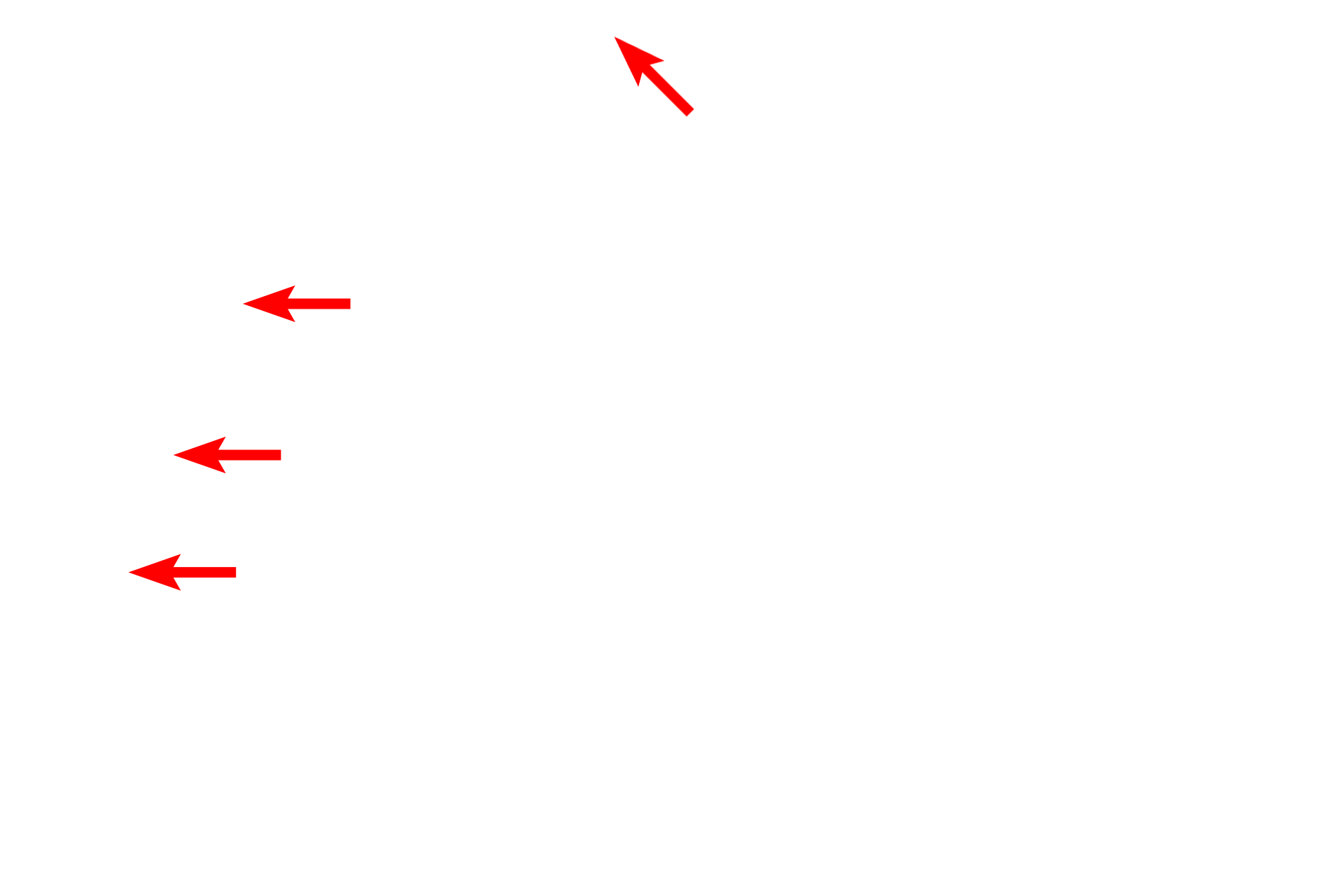
Stratum granulosum
Stratum granulosum cells contain keratohyalin granules of varying sizes. The contents of these electron dense, non-membrane-enclosed granules aggregate tonofibrils into a tightly packed matrix. Additional components crosslink sub-plasmalemmal proteins producing a thickened, cornified cell envelope. The resulting non-living scales or squames form the stratum corneum. 10,000x

Nucleus
Stratum granulosum cells contain keratohyalin granules of varying sizes. The contents of these electron dense, non-membrane-enclosed granules aggregate tonofibrils into a tightly packed matrix. Additional components crosslink sub-plasmalemmal proteins producing a thickened, cornified cell envelope. The resulting non-living scales or squames form the stratum corneum. 10,000x

Keratohyalin granules
Stratum granulosum cells contain keratohyalin granules of varying sizes. The contents of these electron dense, non-membrane-enclosed granules aggregate tonofibrils into a tightly packed matrix. Additional components crosslink sub-plasmalemmal proteins producing a thickened, cornified cell envelope. The resulting non-living scales or squames form the stratum corneum. 10,000x

Maturing keratohyalin granules
Stratum granulosum cells contain keratohyalin granules of varying sizes. The contents of these electron dense, non-membrane-enclosed granules aggregate tonofibrils into a tightly packed matrix. Additional components crosslink sub-plasmalemmal proteins producing a thickened, cornified cell envelope. The resulting non-living scales or squames form the stratum corneum. 10,000x

Keratin filaments
Stratum granulosum cells contain keratohyalin granules of varying sizes. The contents of these electron dense, non-membrane-enclosed granules aggregate tonofibrils into a tightly packed matrix. Additional components crosslink sub-plasmalemmal proteins producing a thickened, cornified cell envelope. The resulting non-living scales or squames form the stratum corneum. 10,000x

Lamellar bodies >
Lamellar bodies are formed in the upper layers of the stratum spinosum and contain lipids enriched in ceramides. Contents of the lamellar bodies are exocytosed into extracellular space as cells transition from the stratum granulosum into stratum corneum. These lipids act as a sealant that forms both a water and microbial barrier for the epidermis.

Desmosomes >
Desmosomes persist into the stratum corneum but are eventually degraded as the scales are shed from the surface (desquamation).
 PREVIOUS
PREVIOUS